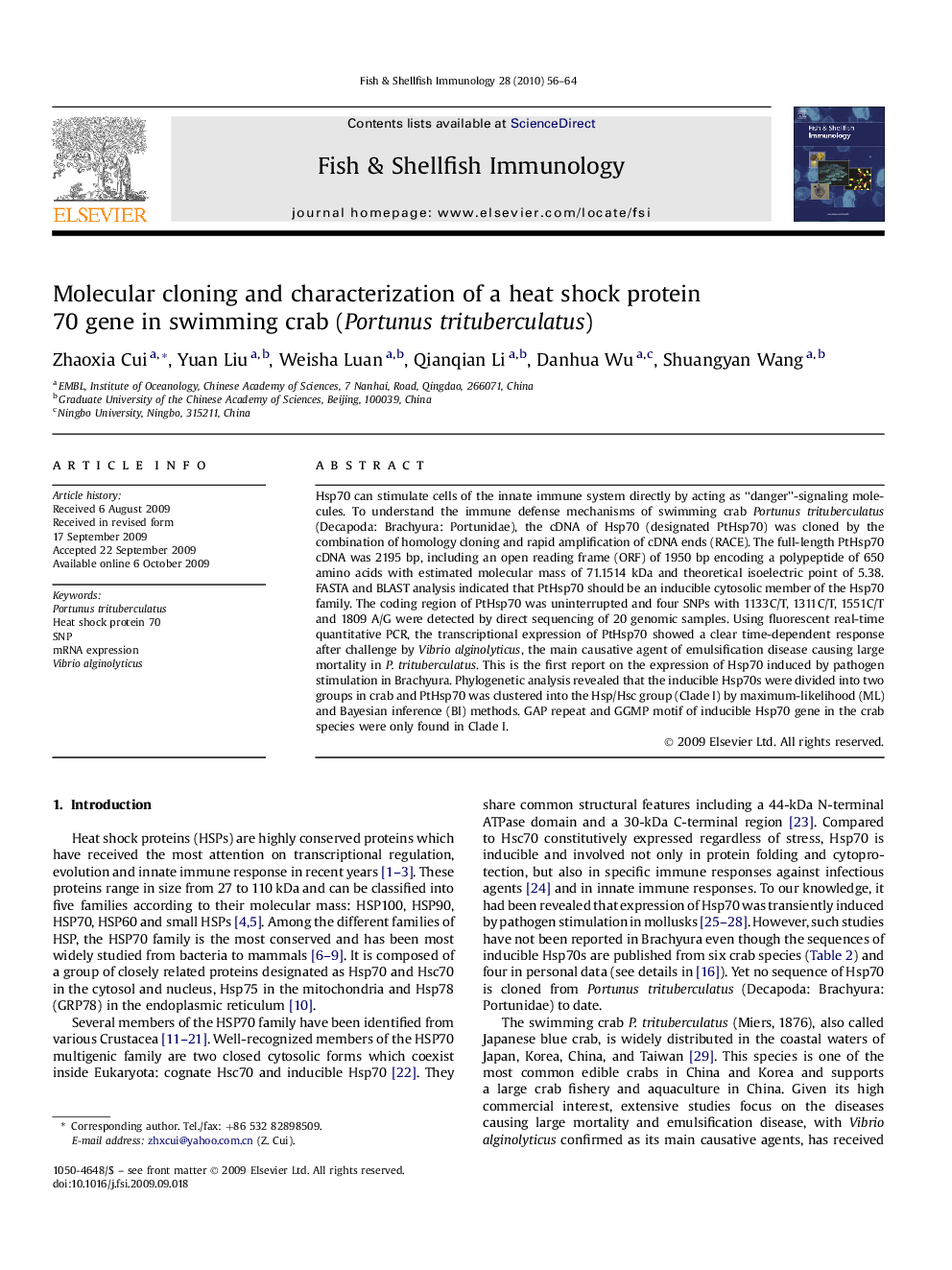| Article ID | Journal | Published Year | Pages | File Type |
|---|---|---|---|---|
| 2432914 | Fish & Shellfish Immunology | 2010 | 9 Pages |
Hsp70 can stimulate cells of the innate immune system directly by acting as “danger”-signaling molecules. To understand the immune defense mechanisms of swimming crab Portunus trituberculatus (Decapoda: Brachyura: Portunidae), the cDNA of Hsp70 (designated PtHsp70) was cloned by the combination of homology cloning and rapid amplification of cDNA ends (RACE). The full-length PtHsp70 cDNA was 2195 bp, including an open reading frame (ORF) of 1950 bp encoding a polypeptide of 650 amino acids with estimated molecular mass of 71.1514 kDa and theoretical isoelectric point of 5.38. FASTA and BLAST analysis indicated that PtHsp70 should be an inducible cytosolic member of the Hsp70 family. The coding region of PtHsp70 was uninterrupted and four SNPs with 1133C/T, 1311C/T, 1551C/T and 1809 A/G were detected by direct sequencing of 20 genomic samples. Using fluorescent real-time quantitative PCR, the transcriptional expression of PtHsp70 showed a clear time-dependent response after challenge by Vibrio alginolyticus, the main causative agent of emulsification disease causing large mortality in P. trituberculatus. This is the first report on the expression of Hsp70 induced by pathogen stimulation in Brachyura. Phylogenetic analysis revealed that the inducible Hsp70s were divided into two groups in crab and PtHsp70 was clustered into the Hsp/Hsc group (Clade I) by maximum-likelihood (ML) and Bayesian inference (BI) methods. GAP repeat and GGMP motif of inducible Hsp70 gene in the crab species were only found in Clade I.
